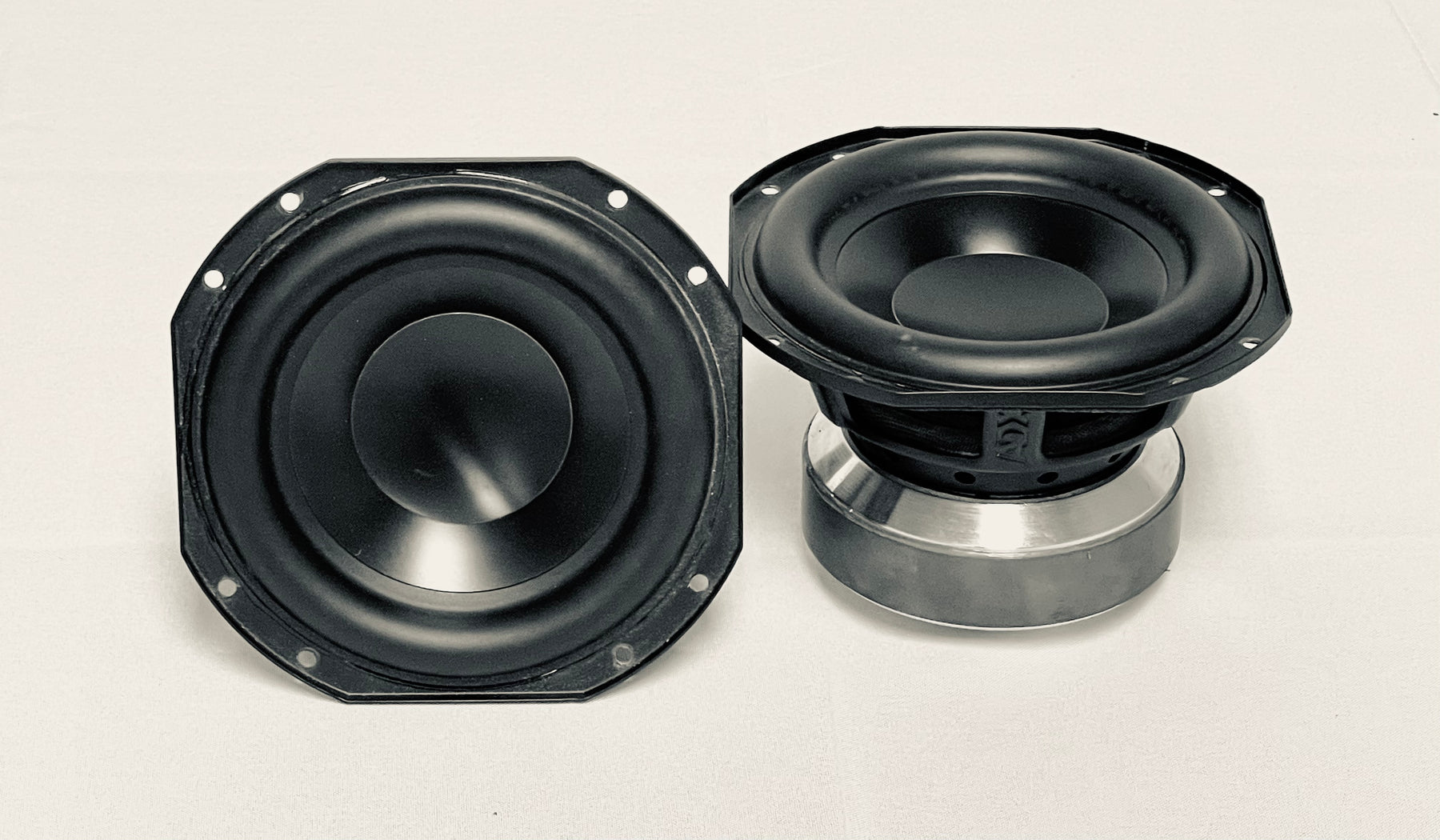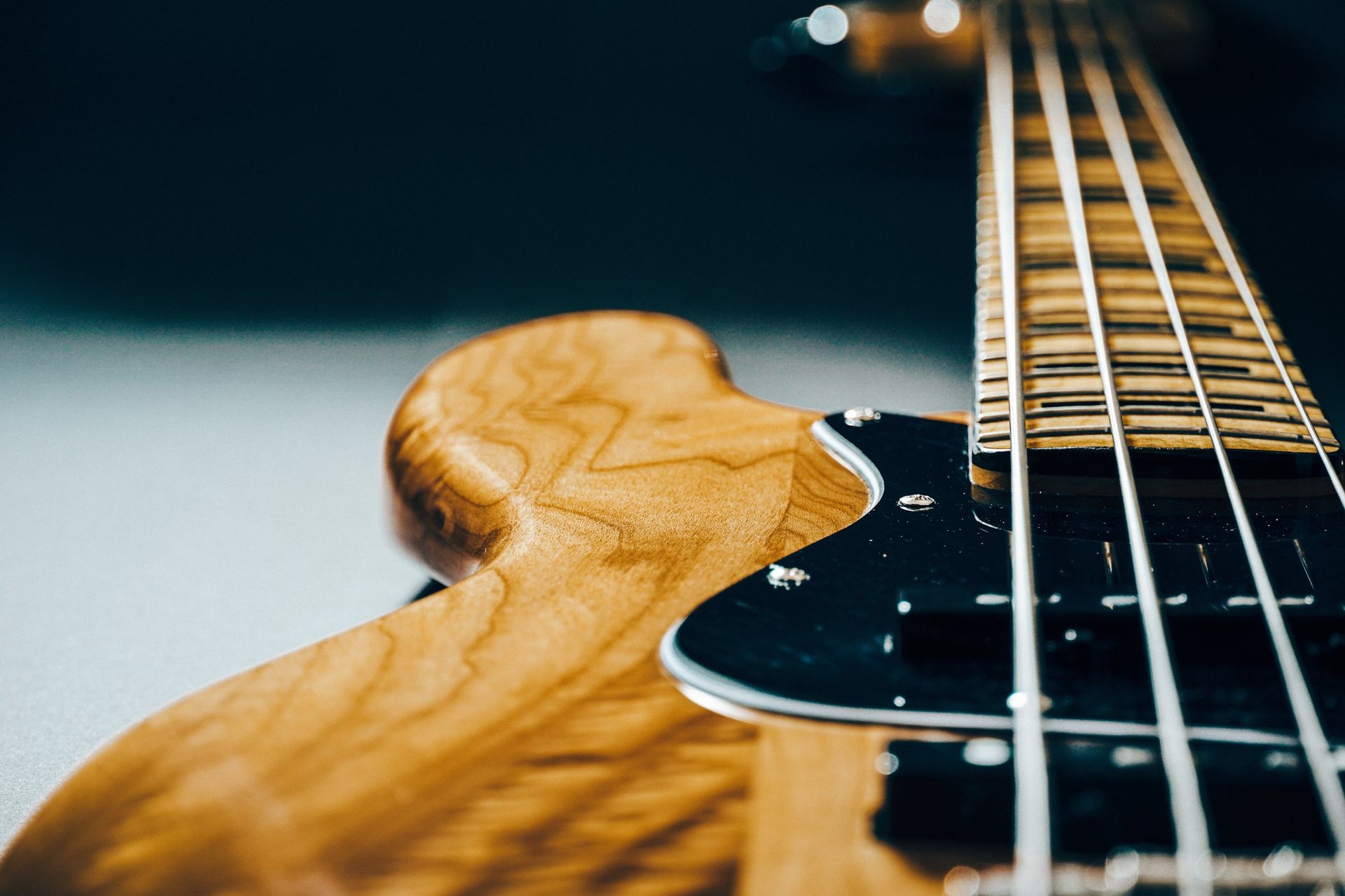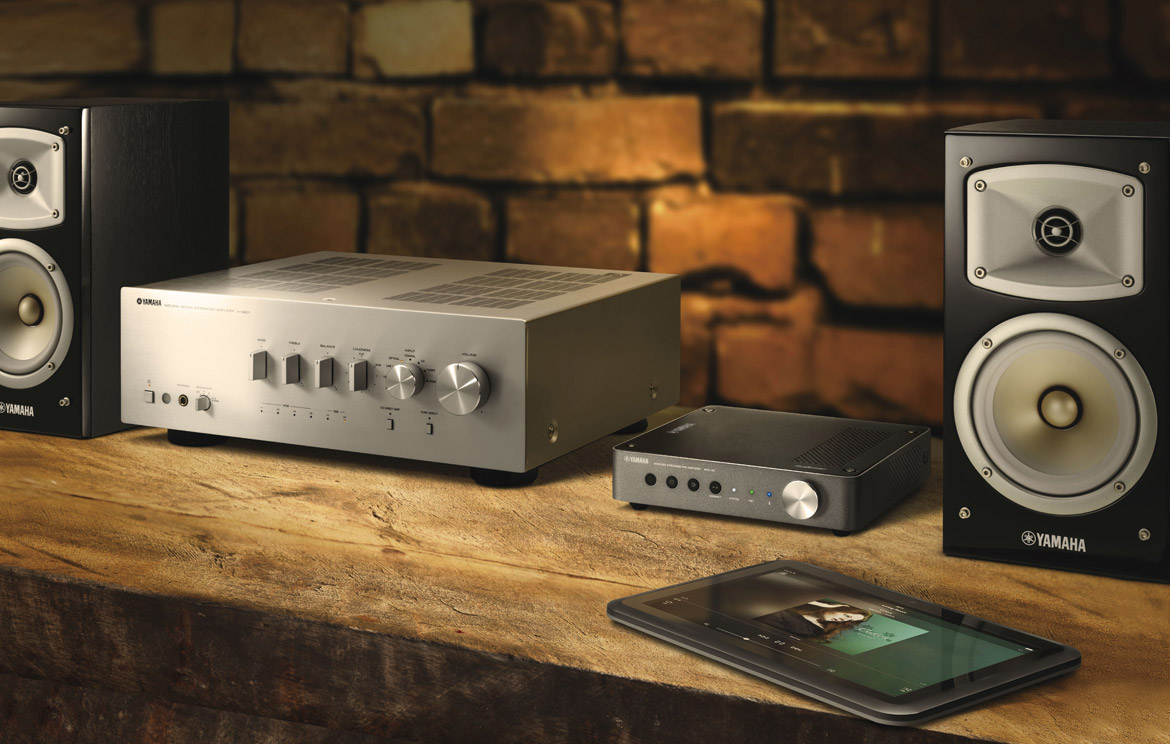Home>Instruments>Bass>What Is Mid Bass Speaker


Bass
What Is Mid Bass Speaker
Published: November 28, 2023
Discover the power of mid bass speaker and its impact on your audio experience. Explore the benefits of incorporating bass into your sound system today.
(Many of the links in this article redirect to a specific reviewed product. Your purchase of these products through affiliate links helps to generate commission for AudioLover.com, at no extra cost. Learn more)
Table of Contents
- Introduction
- Definition of Mid Bass Speaker
- How Mid Bass Speakers Work
- Components of Mid Bass Speaker
- Types of Mid Bass Speakers
- Importance of Mid Bass Speaker in Audio Systems
- Common Applications of Mid Bass Speaker
- Factors to Consider When Choosing a Mid Bass Speaker
- Maintenance and Care for Mid Bass Speakers
- Conclusion
Introduction
Welcome to the world of audio! Whether you are a budding musician, a sound engineer, or simply an avid music lover, you have probably come across the term “mid bass speaker” at some point. But what exactly is a mid bass speaker and why is it an essential component in audio systems?
In simple terms, a mid bass speaker is a type of loudspeaker designed to reproduce the mid-bass frequencies, generally ranging from around 80Hz to 800Hz. These frequencies contain the lower end of the midrange spectrum and are responsible for providing depth, warmth, and punch to your audio experience.
Mid bass speakers serve as crucial elements in audio systems, allowing you to experience the full range of sound with enhanced clarity and presence. They play a vital role in reproducing the lower frequencies of instruments such as bass guitars, drums, and lower male vocals, adding richness and depth to the overall sound. Whether you’re listening to music, watching a movie, or hosting a party, mid bass speakers are essential for creating an immersive audio experience.
Mid bass speakers work in conjunction with other components in a speaker system, such as tweeters and subwoofers, to achieve a balanced and accurate sound reproduction. While tweeters handle the high frequencies and subwoofers take care of the low frequencies, mid bass speakers bridge the gap between the two, ensuring a smooth transition and a cohesive audio performance.
Understanding the components, types, applications, and importance of mid bass speakers can help you make informed decisions when setting up your audio system. Whether you are looking to upgrade your home theater setup, improve your car audio system, or enhance your music production studio, having a solid understanding of mid bass speakers will undoubtedly enhance your audio experience.
In this article, we will dive deeper into the world of mid bass speakers, exploring how they work, the different types available, their importance in audio systems, common applications, factors to consider when choosing one, and important maintenance tips to prolong their lifespan. So, let’s get started on this sonic journey and uncover the secrets of the mid bass speaker.
Definition of Mid Bass Speaker
The mid bass speaker, also known as a midrange driver or midwoofer, is a specialized loudspeaker designed to reproduce frequencies in the mid-bass range. This range typically covers frequencies from around 80Hz to 800Hz. While the term “mid bass” may vary slightly depending on the context, it generally refers to the lower end of the midrange spectrum.
The main purpose of a mid bass speaker is to accurately reproduce the mid-bass frequencies in audio signals, providing depth, impact, and a sense of fullness to the sound. It plays a crucial role in creating a balanced and realistic audio experience, particularly when it comes to music production, home theater systems, car audio, and live sound reinforcement.
Unlike specialized woofers that focus on reproducing low frequencies or dedicated tweeters that handle high frequencies, mid bass speakers are designed to fill the gap between these two ends of the audio spectrum. They are responsible for delivering the midrange frequencies that fall within the lower and middle portion of the audio spectrum.
Mid bass speakers feature a cone or diaphragm driver that moves back and forth in response to electrical signals, generating sound waves. These cones are typically larger in size compared to tweeters but smaller than dedicated woofers. Their size allows them to cover a wider frequency range while still maintaining clarity and precision.
While mid bass speakers are often present in multi-driver speaker systems, such as bookshelf speakers, floor-standing speakers, and component speaker setups, they can also be used as standalone units, particularly in smaller audio setups or as part of a larger speaker array.
The term “mid bass” can sometimes be confused with “midrange,” which typically refers to a broader range of frequencies beyond the mid-bass range. However, in the context of speaker systems and audio reproduction, mid bass speakers specifically refer to those designed to handle the lower end of the midrange spectrum with a focus on depth and impact.
In summary, mid bass speakers are specialized loudspeakers designed to reproduce the mid-bass frequencies in audio signals. They play a critical role in sound reproduction, providing depth, impact, and balance to the audio output. Understanding the definition and function of mid bass speakers is essential for anyone looking to build a high-quality audio system or enhance their current setup.
How Mid Bass Speakers Work
Mid bass speakers employ various technologies and design principles to accurately reproduce the mid-bass frequencies. Understanding how they work can provide valuable insights into their functionality and help optimize their performance.
At the heart of a mid bass speaker is a diaphragm or cone driver, typically made of materials like paper, plastic, or metal. This driver is mounted on a frame and connected to a voice coil, which is attached to a magnet assembly. When an electrical signal is sent to the speaker, it passes through the voice coil, creating a magnetic field. This interaction between the voice coil and the magnet causes the diaphragm to move back and forth, thereby generating sound waves.
The movement of the diaphragm is crucial for accurately reproducing the mid-bass frequencies. As the voice coil receives the electrical signal, it experiences changes in the magnetic field strength, which forces it to rapidly vibrate in response to the audio signal’s characteristics. The diaphragm, in turn, translates this vibration into mechanical energy, pushing and pulling the surrounding air molecules to create sound waves.
The shape and design of the diaphragm also play a significant role in determining the speaker’s performance. The cone-shaped diaphragm is one of the most common designs used in mid bass speakers. Its curvature and stiffness help control the dispersion of sound and reduce distortion. Some mid bass speakers may also incorporate additional technologies like waveguides or phase plugs to enhance the dispersion pattern and optimize the driver’s performance.
In addition to the diaphragm and voice coil, mid bass speakers also feature a crossover network. The crossover is responsible for directing the appropriate frequencies to the mid bass speaker, ensuring it handles only the mid-bass frequencies within its designated range. By filtering out frequencies above and below its intended range, the mid bass speaker can focus on reproducing only the frequencies it is designed for, resulting in cleaner and more accurate sound reproduction.
Furthermore, the enclosure or cabinet in which the mid bass speaker is housed plays a critical role in its performance. The cabinet provides structural support, isolates the front and rear wave from each other, and helps control the overall sound dispersion. Different enclosure designs, such as sealed, ported, or bandpass, can significantly impact the mid bass speaker’s frequency response and efficiency.
Overall, mid bass speakers work by converting electrical signals into mechanical energy through the movement of a diaphragm driven by a voice coil. The design of the diaphragm, along with other factors such as the crossover network and speaker enclosure, contribute to the accurate reproduction of mid-bass frequencies.
Understanding the inner workings of mid bass speakers allows audio enthusiasts and professionals to optimize their performance and make informed decisions when selecting speakers for various applications.
Components of Mid Bass Speaker
Mid bass speakers are composed of various components that work together to produce accurate and high-quality sound reproduction. Understanding the different components can provide valuable insights into how mid bass speakers function and help in selecting the right speaker for specific audio needs.
1. Diaphragm: The diaphragm, also known as the cone, is a crucial component of a mid bass speaker. It is typically made of materials like paper, plastic, or metal and is responsible for converting electrical signals into sound waves. The design and materials used in the diaphragm contribute to the speaker’s overall performance, including its frequency response and clarity.
2. Voice Coil: The voice coil is attached to the diaphragm and is responsible for driving its movement. It is a wire coil that becomes electromagnetically charged when an electrical signal is sent through it. The interaction between the voice coil and the magnet assembly causes the diaphragm to vibrate, generating sound waves.
3. Magnet Assembly: The magnet assembly consists of a permanent magnet and a pole piece, which creates a strong magnetic field. This magnetic field interacts with the voice coil, causing it to move in response to the electrical signals. The size and strength of the magnet assembly can impact the speaker’s sensitivity and efficiency.
4. Crossover: The crossover is an electronic circuit that divides the audio signal into different frequency bands and sends them to the appropriate speaker drivers. In the case of a mid bass speaker, the crossover ensures that only the mid-bass frequencies within the designated range are directed to the speaker. This helps optimize the speaker’s performance and prevent it from handling frequencies it is not designed for.
5. Surround: The surround is a flexible ring that attaches the diaphragm to the speaker frame. It allows the diaphragm to move freely while maintaining its position within the speaker assembly. The surround material must be durable and flexible to withstand the constant movement of the diaphragm, ensuring long-term performance and reliability.
6. Frame: The speaker frame, also known as the basket, provides structural support and houses the various components of the mid bass speaker. It is typically made of materials like steel or aluminum to provide rigidity and minimize vibrations that could affect the speaker’s performance.
7. Terminals: The terminals are the connection points on the speaker frame where the speaker wires or cables are attached. They provide the electrical connection between the speaker and the audio source.
8. Enclosure: While not technically a component of the mid bass speaker itself, the speaker enclosure or cabinet is an integral part of the speaker system. The enclosure provides a controlled environment for the speaker to operate in, reducing unwanted resonances and enhancing overall sound quality.
Understanding the components of a mid bass speaker allows enthusiasts and professionals to make informed decisions when selecting speakers based on their specific needs and preferences. Each component plays a crucial role in producing accurate and dynamic mid-bass frequencies, contributing to a rich and immersive audio experience.
Types of Mid Bass Speakers
Mid bass speakers come in various types, each with its own distinct design and characteristics. Understanding the different types can help in selecting the right mid bass speaker for specific audio applications and preferences.
- Dynamic Cone Mid Bass Speakers: Dynamic cone mid bass speakers are the most common type found in audio systems. They feature a cone-shaped diaphragm made of materials like paper, plastic, or metal. These speakers are known for their wide frequency response and ability to handle high-power outputs. They are a popular choice for both home audio and professional audio setups.
- Compression Horn Mid Bass Speakers: Compression horn mid bass speakers utilize a horn-loaded design to enhance efficiency and projection. The diaphragm is connected to a compression driver, and the sound is emitted through a horn. These speakers are often used in live sound reinforcement applications, as they can produce high sound levels with minimal distortion.
- Planar Mid Bass Speakers: Planar mid bass speakers use a flat diaphragm made of a thin and lightweight material, such as Mylar or aluminum. The diaphragm is driven by an array of magnets, producing sound by vibrating across its entire surface. These speakers are known for their exceptional clarity and detail, making them popular in audiophile-grade systems.
- Ribbon Mid Bass Speakers: Ribbon mid bass speakers feature a diaphragm made of a thin metal ribbon that is suspended in a magnetic field. When an electrical current passes through the ribbon, it vibrates and produces sound. Ribbon speakers are highly regarded for their precise and transparent sound reproduction, particularly in high-frequency ranges.
- Electrostatic Mid Bass Speakers: Electrostatic mid bass speakers use a very thin diaphragm made of a conductive material that is sandwiched between two stators. An electrical charge is applied to the stators, causing the diaphragm to move and generate sound. These speakers are known for their fast response and airy sound characteristics, making them favored by discerning audiophiles.
Each type of mid bass speaker has its own advantages and considerations. Factors such as frequency response, power handling, efficiency, and overall sound characteristics vary among the different types. Choosing the right type of mid bass speaker depends on the desired audio application, personal preferences in sound reproduction, and the specific requirements of the audio system.
Importance of Mid Bass Speaker in Audio Systems
The mid bass speaker plays a crucial role in audio systems, contributing to the overall sound quality and ensuring a balanced and immersive listening experience. Here are several reasons why mid bass speakers are important in audio systems:
- Frequency Range Coverage: Mid bass speakers handle the lower end of the midrange frequencies, filling the gap between tweeters (high-frequency drivers) and subwoofers (low-frequency drivers). They reproduce the frequencies that give music depth, warmth, and impact, allowing for a more natural and full-bodied sound reproduction.
- Enhanced Clarity and Detail: The mid bass frequencies contain essential elements of instruments such as bass guitars, drums, and lower male vocals. Mid bass speakers accurately reproduce these frequencies, adding clarity and detail to the audio output. This allows listeners to hear instrument nuances and subtleties that may be missed without dedicated mid bass drivers.
- Improved Soundstage and Imaging: A properly integrated mid bass speaker helps create a wide and cohesive soundstage, making the listener feel like they are in the midst of the music. By accurately reproducing mid bass frequencies, the speaker enhances the sense of space and positioning of instruments, contributing to a more realistic and engaging audio experience.
- Seamless Integration: Mid bass speakers ensure a smooth transition between the low-frequency output of subwoofers and the high-frequency output of tweeters. They help maintain a balanced and even frequency response across the audible spectrum. Without mid bass speakers, the audio system may suffer from a noticeable gap in frequencies, resulting in an unbalanced or disjointed sound reproduction.
- Compatibility with Various Musical Genres: Mid bass speakers are versatile and suitable for reproducing a wide range of musical genres. From classical music to rock, pop, jazz, and electronic music, a well-designed mid bass speaker ensures accurate representation of the sound across diverse genres, delivering an enjoyable and authentic listening experience.
- Optimal Home Theater Experience: In home theater setups, mid bass speakers play a critical role in reproducing the impact and low-frequency effects of action-packed movie scenes. They help create a sense of immersion, allowing viewers to feel the rumble of explosions and the thumping bass in their favorite soundtracks.
- Sound Reinforcement in Live Settings: In live sound applications, such as concerts and events, mid bass speakers provide the necessary power and depth to fill the venue with impactful sound. They ensure that the audience can feel and experience the low and punchy frequencies of the music being performed.
Overall, the mid bass speaker is a vital component in audio systems, responsible for reproducing the midrange frequencies that enhance depth, impact, and clarity. Its integration ensures a balanced and accurate sonic reproduction across a wide variety of musical genres and audio applications, resulting in a more immersive and enjoyable listening experience.
Common Applications of Mid Bass Speaker
The versatility and importance of mid bass speakers make them widely used in various audio applications. Here are some of the common applications where mid bass speakers are utilized:
- Home Audio: Mid bass speakers are a fundamental component of home audio systems, including stereo systems and surround sound setups. They offer depth, impact, and clarity to music and movie soundtracks, creating a rich and immersive listening experience in the comfort of your own home.
- Car Audio: In-car entertainment systems heavily rely on mid bass speakers to reproduce the lower frequencies of music. Whether you’re cruising down the highway or stuck in traffic, mid bass speakers provide the necessary punch and depth to enhance the audio quality within your vehicle.
- Studio Monitoring: Mid bass speakers are often used in professional recording studios for accurate monitoring and mixing purposes. They allow audio engineers to hear the finer details and frequency balance of the recorded material, ensuring that the mix translates well across different playback systems.
- Live Sound Reinforcement: Mid bass speakers are essential in live sound reinforcement applications such as concerts, festivals, and public events. They help fill the venue with impactful and powerful sound, ensuring that the low-frequency elements of music are properly delivered to the audience.
- DJ Setups and Nightclubs: DJs rely on mid bass speakers to provide the necessary punch and energy in their performances. Mid bass speakers help reproduce the low-end thump and bass-heavy tracks that are characteristic of dance music, creating an electrifying atmosphere in nightclubs and dance parties.
- Public Address Systems: Mid bass speakers are utilized in public address systems to deliver clear and intelligible speech in settings such as conferences, seminars, and public announcements. They ensure that the speaker’s voice is well-projected and easily heard by the audience.
- Home Theaters: Mid bass speakers are an integral part of home theater setups, working in conjunction with other speakers to provide an immersive cinematic experience. They reproduce the impactful low-frequency effects in movie soundtracks that add depth and realism to the on-screen action.
- Commercial Installations: Mid bass speakers find their place in various commercial installations such as restaurants, retail stores, and fitness centers. They contribute to creating a pleasant ambiance and ensuring a consistent audio experience across the establishment.
These are just a few examples of the common applications where mid bass speakers are utilized. Their ability to handle midrange frequencies with accuracy and impact makes them essential in delivering a well-rounded and enjoyable sound reproduction experience across a wide range of audio settings.
Factors to Consider When Choosing a Mid Bass Speaker
When selecting a mid bass speaker for your audio system, there are several important factors to consider to ensure optimal performance and compatibility with your setup. Here are the key factors to keep in mind:
- Power Handling and Sensitivity: Consider the power handling capabilities of the mid bass speaker and ensure it matches your amplifier’s power output. Additionally, look for a speaker with adequate sensitivity to ensure efficient and impactful sound reproduction with your amplifier.
- Frequency Response: Take note of the frequency range of the mid bass speaker and ensure it covers the desired midrange frequencies. A broader frequency response allows for more accurate and detailed sound reproduction.
- Build Quality: Consider the build quality of the mid bass speaker. Look for sturdy construction, quality materials, and a reliable mounting mechanism. Solid construction minimizes unwanted vibrations and ensures durability over time.
- Speaker Size: Consider the size of the mid bass speaker and ensure it fits your intended application. Larger speakers generally provide deeper bass response, but they may not be suitable for all audio setups due to space constraints.
- Enclosure Type: Evaluate the type of enclosure the mid bass speaker requires. Different enclosure types, such as sealed or ported, can significantly impact the speaker’s performance, particularly in terms of bass response and overall sonic characteristics.
- Listening Preferences: Consider your personal listening preferences and the type of sound you prefer. Each mid bass speaker may have its own sonic signature, so listening to demonstrations or seeking expert advice can help determine which speaker aligns with your preferences.
- Compatibility with Existing System: Ensure that the mid bass speaker you choose is compatible with your existing audio components, including amplifiers, receivers, and crossover networks. Check the impedance and power requirements to ensure a proper match.
- Budget: Determine your budget for the mid bass speaker. Like any audio component, speakers are available at various price points, and setting a budget can help narrow down the options and find the best speaker within your price range.
- Customer Reviews and Recommendations: Research customer reviews and seek recommendations from audio professionals or enthusiasts who have experience with mid bass speakers. Their insights and feedback can provide valuable guidance in making an informed decision.
It is important to consider these factors collectively to find a mid bass speaker that best suits your audio needs, preferences, and the specific requirements of your audio system. By carefully evaluating these elements, you can ensure that your mid bass speaker enhances your audio experience and brings out the best in your music, movies, or other audio content.
Maintenance and Care for Mid Bass Speakers
Proper maintenance and care are essential for ensuring the longevity and optimal performance of mid bass speakers. Here are some key tips to keep in mind in order to maintain your mid bass speakers:
- Regular Cleaning: Dust and debris can accumulate on the diaphragm and other components of the speaker, affecting its performance. Use a soft brush or a microfiber cloth to gently remove any dust or dirt from the surface of the speaker.
- Avoid Excessive Moisture: Moisture can damage the speaker components and lead to rot or fungus growth. Avoid exposing the mid bass speakers to excessive moisture, and if necessary, use a dry cloth to wipe down the speakers if they become damp.
- Avoid Overdriving: It is important not to overdrive the mid bass speakers beyond their recommended power capabilities. Excessive power can cause distortion, clipping, and even damage to the speaker’s components. Always ensure that your amplifier or receiver is properly matched to the power handling capacity of the speakers.
- Proper Storage: If you need to store your mid bass speakers for an extended period, ensure that they are stored in a dry and dust-free environment. Cover the speakers with protective cloth or plastic covers to prevent dust accumulation and potential damage.
- Monitor Surround Condition: The surround, the flexible ring that attaches the diaphragm to the speaker frame, can deteriorate over time. Regularly inspect the surround for any signs of wear, cracks, or tears. If necessary, consider replacing the surround to maintain optimal performance.
- Placement and Positioning: When setting up your mid bass speakers, consider their placement and positioning. Ensure they are properly secured and positioned to minimize vibrations or unwanted resonances. Experiment with speaker placement to achieve the best sound imaging and overall performance.
- Use Proper Amplifier Settings: Pay attention to the amplifier settings, particularly the equalizer and crossover settings, to avoid any potential strain on the mid bass speakers. Improper settings can lead to distortion or damage to the speakers. Consult the speaker’s manual or manufacturer’s recommendations for optimal amplifier settings.
- Avoid Excessive Volume: While mid bass speakers are designed to handle powerful sound, prolonged exposure to loud volumes can cause damage to the speakers over time. It’s important to maintain responsible listening levels and avoid excessive volume levels that can strain the speaker’s components.
- Be Mindful of Surrounding Vibrations: Excessive vibrations from sources such as subwoofers, appliances, or nearby speakers can impact the performance of mid bass speakers. Minimize vibrations in the surrounding environment to prevent unwanted resonance or interference with the speaker’s performance.
- Professional Servicing: If you notice any significant issues with your mid bass speakers, such as distorted sound or physical damage, it may be necessary to seek professional servicing. Qualified technicians can diagnose and repair any underlying problems, ensuring that your speakers are restored to optimal working condition.
By following these maintenance tips and caring for your mid bass speakers, you can prolong their lifespan and maintain their performance over time. Regular cleaning, proper storage, and mindful usage will help ensure that your mid bass speakers continue to deliver accurate and impactful sound for years to come.
Conclusion
Mid bass speakers are an integral component in audio systems, delivering depth, impact, and clarity to the midrange frequencies. Whether you’re building a home audio setup, upgrading your car audio system, or working in a professional recording studio, understanding the importance and function of mid bass speakers is essential.
From their role in creating a balanced soundstage to their ability to accurately reproduce the lower frequencies of instruments and vocals, mid bass speakers contribute to a rich and immersive audio experience. They bridge the gap between tweeters and subwoofers, ensuring a smooth transition and cohesive sound reproduction across the entire frequency range.
When selecting a mid bass speaker, it’s important to consider factors such as power handling, frequency response, build quality, and compatibility with existing audio components. These considerations will help you find the right speaker that suits your audio needs and preferences.
Maintaining and caring for mid bass speakers is also crucial for preserving their performance and longevity. Regular cleaning, proper storage, and responsible usage will help ensure that your mid bass speakers continue to deliver accurate and impactful sound for years to come.
Whether you’re enjoying your favorite music, watching a movie, or experiencing a live concert, mid bass speakers play a vital role in enhancing the overall audio experience. Their ability to accurately reproduce the midrange frequencies adds depth, warmth, and detail, immersing you in a world of sound.
So, next time you’re setting up your audio system or looking to upgrade your speakers, remember the importance of mid bass speakers and how they can transform your audio experience. With the right mid bass speakers, you can truly elevate your sound to new heights and enjoy the full richness of the music you love.











